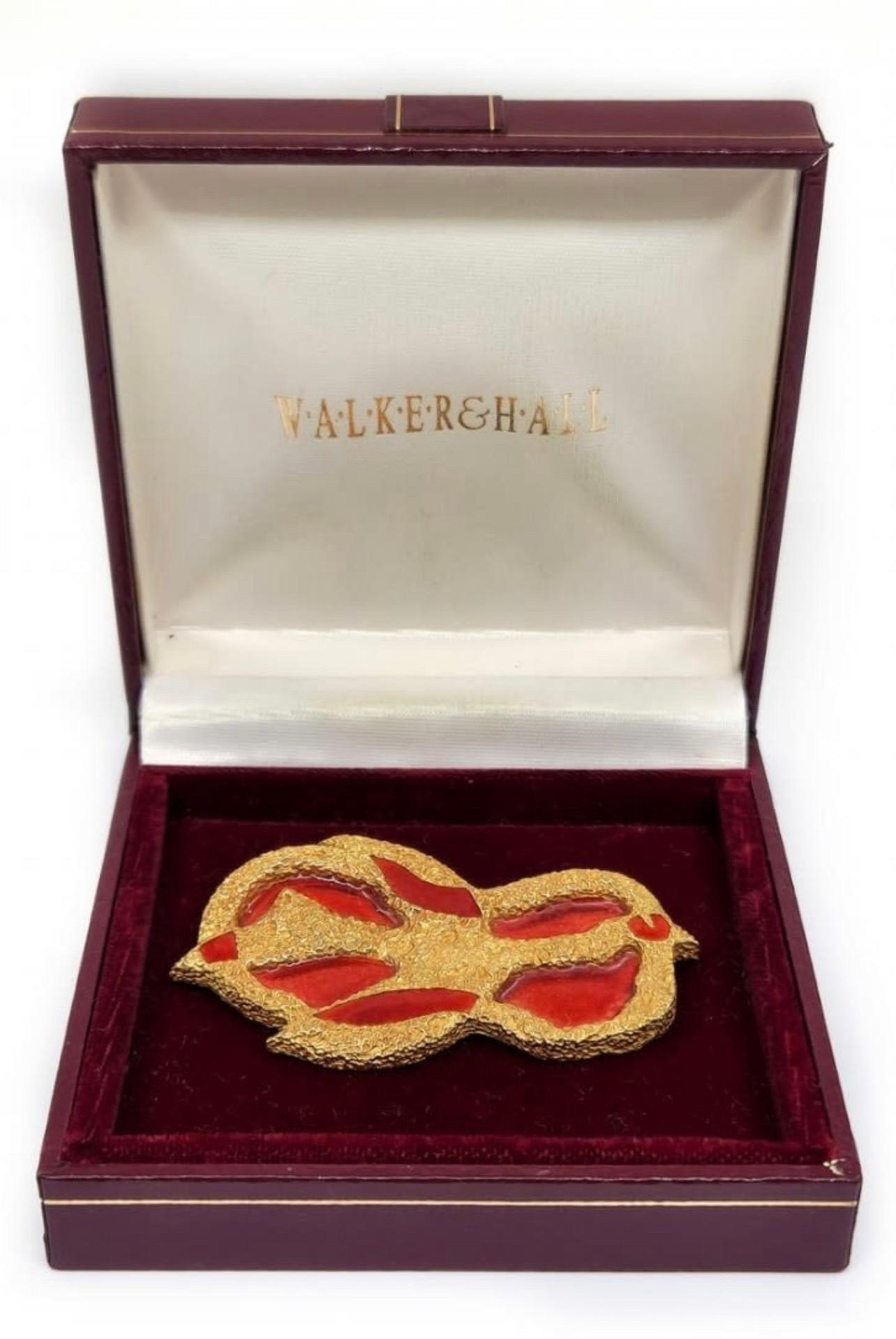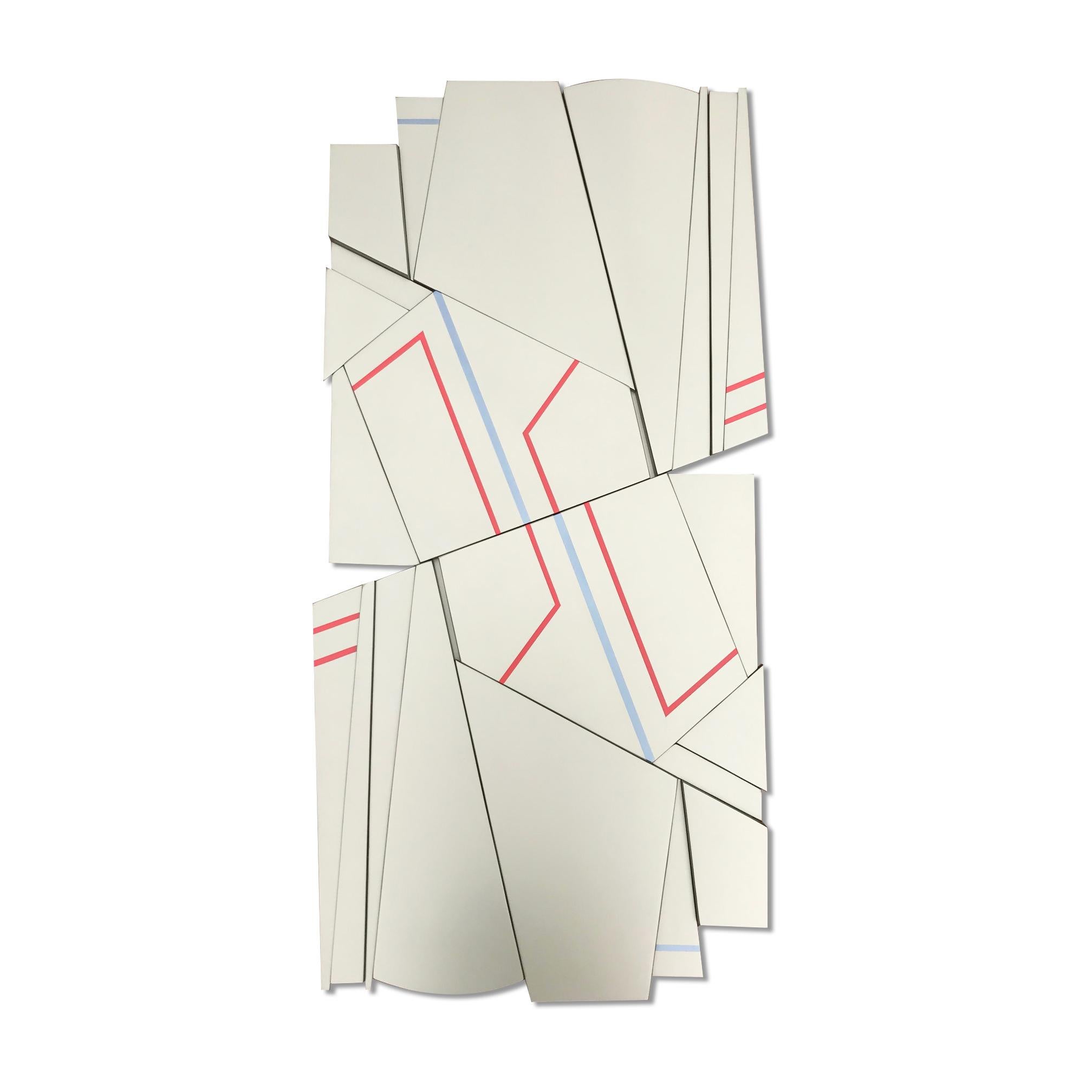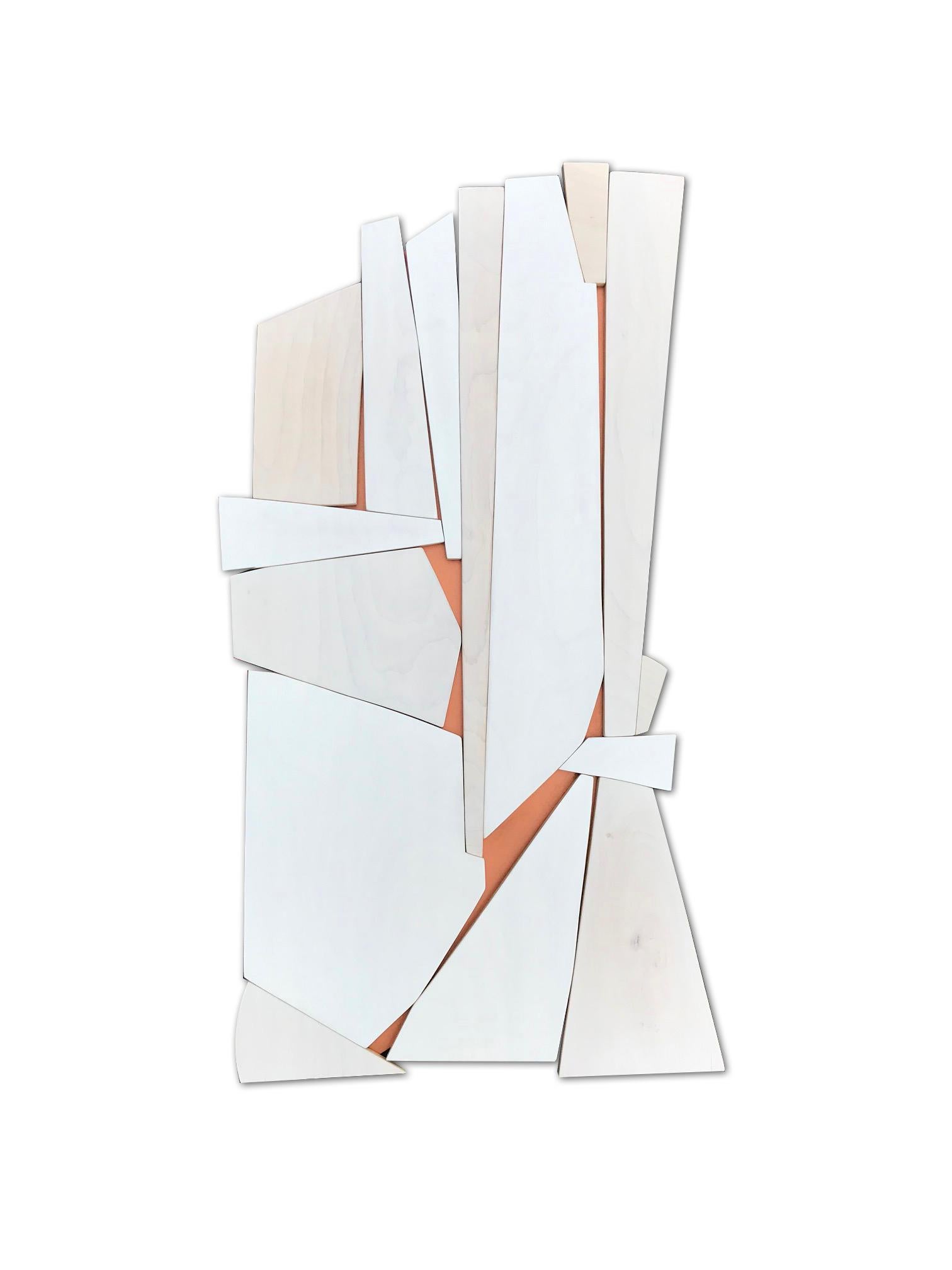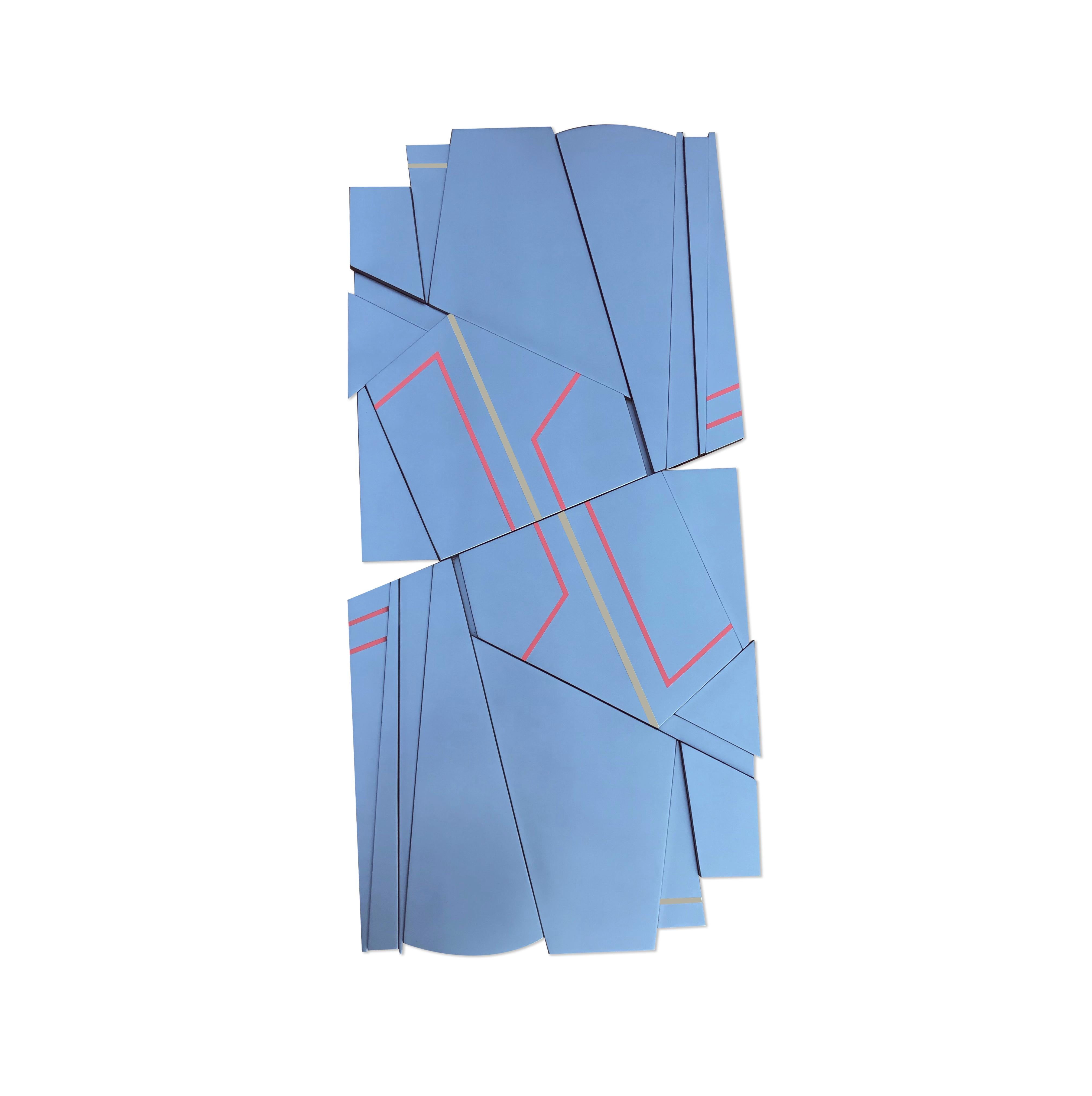Items Similar to Large Hand Painted Abstract Ceramic Platter Stamped Madoura Plein Feu Brutalist
Want more images or videos?
Request additional images or videos from the seller
1 of 17
UnknownLarge Hand Painted Abstract Ceramic Platter Stamped Madoura Plein Feu Brutalist
About the Item
Large Madoura Pottery Ceramic Platter
Stamped "MADOURA PLEIN FEU"
This is not marked Picasso. It is an early piece. i am uncertain who the artist is. It appears to be an abstract fish skeleton.
Suzanne Douly married George Ramie who was a key artist at Vallauris and was strongly connected to Pablo Picasso. In 1946, Pablo Picasso first set foot into the Madoura Pottery studio, and later began a prolific partnership between himself and Georges and Suzanne Ramie, owners of the studio. He approached this ceramic medium with the same inventiveness and imagination he brought to his previous paintings and prints. Suzanne Ramie also designed and made some of these pieces.
- Dimensions:Height: 25 in (63.5 cm)Width: 15 in (38.1 cm)Depth: 3 in (7.62 cm)
- Medium:
- Movement & Style:
- Period:
- Condition:good. minor wear. please see photos.
- Gallery Location:Surfside, FL
- Reference Number:1stDibs: LU3828709432
About the Seller
4.9
Platinum Seller
These expertly vetted sellers are 1stDibs' most experienced sellers and are rated highest by our customers.
Established in 1995
1stDibs seller since 2014
1,565 sales on 1stDibs
Typical response time: 1 hour
- ShippingRetrieving quote...Ships From: Surfside, FL
- Return PolicyA return for this item may be initiated within 3 days of delivery.
More From This SellerView All
- Rare 18 Karat Gold Enamel Georges Braque Sculpture BroochBy Georges BraqueLocated in Surfside, FLGeorges Braque (French, 1882-1963) Antiboree Gold and Enamel Brooch, 1963 18k gold textured brooch designed by Georges Braque, a rare 18ct gold textured brooch from 1963, a bird flyi...Category
1960s Modern Abstract Sculptures
MaterialsGold, Enamel
- Abstract Painted Ceramic Tile Pop Art Painting Italian Neo Figurative PaintingBy Italo ScangaLocated in Surfside, FLThis painted ceramic tile by Italo Scanga, epitomizes the characteristics of his oeuvre. Polychrome and vibrant art from the Memphis Milano era. This is signed with his initials. This is reminiscent of the mid century work of Jean Lurcat and Jean Picart le Doux. Italo Scanga (June 6, 1932 - July 7, 2001), an Italian-born American artist, was known for his sculptures, prints and, paintings, mostly created from found objects. In his youth in Calabria, Italy he worked as a cabinetmaker's apprentice and studies sculpture with a man who carved statues of saints. Italo Scanga was an innovative neo Dada, neo-Expressionist, and neo-Cubist multimedia artist who made assemblage, collage, sculptures of ordinary objects and created prints, glass, and ceramic works. Modern Italian abstract geometric folk art. Scanga's materials included natural objects like branches and seashells, as well as kitsch figurines, castoff musical instruments and decorative trinkets salvaged from flea markets and thrift shops. He combined these ingredients into free-standing assemblages, which he then painted. Although visually ebullient, the results sometimes referred to gruesome episodes from Greek mythology or the lives and deaths of martyred saints. He considered his artistic influences to be sweepingly pan-cultural, from African sculpture to Giorgio de Chirico. He often collaborated with the sculptor Dale Chihuly, who was a close friend. Constructed of wood and glass, found objects or fabric, his ensembles reflect a trio of activities—working, eating, and praying. These activities dominate the lives of those who live close to the land, but they are also activities that are idealized by many who contemplate, romantically, a simpler, bucolic life. Italo graduated from Michigan State University where he befriended fellow artists Richard Merkin and David Pease. He studied under Lindsey Decker who introduces him to welding and sculpture after his initial interest in photography. Also studies with Charles Pollock, the brother of Abstract Expressionist Jackson Pollock. His first teaching job was at University of Wisconsin (through 1964). where he met Harvey Littleton, a fellow instructor. He later moves to Providence, Rhode Island,I to teach at Rhode Island School of Design (RISD). Is colleagues with artists Richard Merkin and Hardu Keck. Starts a correspondence with HC Westermann. Spends summers teaching at Brown University; colleague of Hugh Townley. Moves to State College, PA, and teaches at Pennsylvania State University for one year. Meets artists Juris Ubans, Harry Anderson, Richard Frankel, and Richard Calabro, who remain friends throughout his career. 1967: David Pease helps him get a tenure track position at Tyler School of Art in Philadelphia, PA, . Artists he works closely with include Ernest Silva, Lee Jaffe, Donald Gill, and William Schwedler. Meets graduate student Dale Chihuly while lecturing at RISD and develops a lifelong friendship. 1969: One person exhibition, Baylor Art Gallery, Baylor University, Waco, TX. Works very closely with students Larry Becker and Heidi Nivling (who later run a gallery in Philadelphia, PA), and Harry Anderson. Welcomes many artists into his home including Donald Judd, Dan Flavin, Bruce Nauman (a former student), Vito Acconci, Ree Morton and Rafael Ferrer. 1973: "Saints Glass" at 112 Greene Street Gallery, NYC. Installation at the Institute of Contemporary Art at University of Pennsylvania, Philadelphia, PA. Meets Gordon Matta Clark and contributes to an artist cookbook. Goes to Pilchuck Glass School, Stanwood, WA, founded by Dale Chihuly, as a visiting artist. He continues to work there annually through 2001. Works over the years with Pilchuck artists Richard Royal, Seaver Leslie, Jamie Carpenter, Joey Kirkpatrick, Flora Mace, Robbie Miller, Billy Morris, Buster Simpson, Toots Zynsky, Howard Ben Tre...Category
1980s Neo-Expressionist Abstract Sculptures
MaterialsEnamel
- Abstract Painted Ceramic Tile Pop Art Painting Italian Neo Figurative PaintingBy Italo ScangaLocated in Surfside, FLThis painted ceramic tile by Italo Scanga, epitomizes the characteristics of his oeuvre. Polychrome and vibrant art from the Memphis Milano era. This is signed with his initials. This is reminiscent of the mid century work of Jean Lurcat and Jean Picart le Doux. Italo Scanga (June 6, 1932 - July 7, 2001), an Italian-born American artist, was known for his sculptures, prints and, paintings, mostly created from found objects. In his youth in Calabria, Italy he worked as a cabinetmaker's apprentice and studies sculpture with a man who carved statues of saints. Italo Scanga was an innovative neo Dada, neo-Expressionist, and neo-Cubist multimedia artist who made assemblage, collage, sculptures of ordinary objects and created prints, glass, and ceramic works. Modern Italian abstract geometric folk art. Scanga's materials included natural objects like branches and seashells, as well as kitsch figurines, castoff musical instruments and decorative trinkets salvaged from flea markets and thrift shops. He combined these ingredients into free-standing assemblages, which he then painted. Although visually ebullient, the results sometimes referred to gruesome episodes from Greek mythology or the lives and deaths of martyred saints. He considered his artistic influences to be sweepingly pan-cultural, from African sculpture to Giorgio de Chirico. He often collaborated with the sculptor Dale Chihuly, who was a close friend. Constructed of wood and glass, found objects or fabric, his ensembles reflect a trio of activities—working, eating, and praying. These activities dominate the lives of those who live close to the land, but they are also activities that are idealized by many who contemplate, romantically, a simpler, bucolic life. Italo graduated from Michigan State University where he befriended fellow artists Richard Merkin and David Pease. He studied under Lindsey Decker who introduces him to welding and sculpture after his initial interest in photography. Also studies with Charles Pollock, the brother of Abstract Expressionist Jackson Pollock. His first teaching job was at University of Wisconsin (through 1964). where he met Harvey Littleton, a fellow instructor. He later moves to Providence, Rhode Island,I to teach at Rhode Island School of Design (RISD). Is colleagues with artists Richard Merkin and Hardu Keck. Starts a correspondence with HC Westermann. Spends summers teaching at Brown University; colleague of Hugh Townley. Moves to State College, PA, and teaches at Pennsylvania State University for one year. Meets artists Juris Ubans, Harry Anderson, Richard Frankel, and Richard Calabro, who remain friends throughout his career. 1967: David Pease helps him get a tenure track position at Tyler School of Art in Philadelphia, PA, . Artists he works closely with include Ernest Silva, Lee Jaffe, Donald Gill, and William Schwedler. Meets graduate student Dale Chihuly while lecturing at RISD and develops a lifelong friendship. 1969: One person exhibition, Baylor Art Gallery, Baylor University, Waco, TX. Works very closely with students Larry Becker and Heidi Nivling (who later run a gallery in Philadelphia, PA), and Harry Anderson. Welcomes many artists into his home including Donald Judd, Dan Flavin, Bruce Nauman (a former student), Vito Acconci, Ree Morton and Rafael Ferrer. 1973: "Saints Glass" at 112 Greene Street Gallery, NYC. Installation at the Institute of Contemporary Art at University of Pennsylvania, Philadelphia, PA. Meets Gordon Matta Clark and contributes to an artist cookbook. Goes to Pilchuck Glass School, Stanwood, WA, founded by Dale Chihuly, as a visiting artist. He continues to work there annually through 2001. Works over the years with Pilchuck artists Richard Royal, Seaver Leslie, Jamie Carpenter, Joey Kirkpatrick, Flora Mace, Robbie Miller, Billy Morris, Buster Simpson, Toots Zynsky, Howard Ben Tre...Category
1980s Neo-Expressionist Abstract Sculptures
MaterialsEnamel
- Architect Olabuenaga Vintage Cloisonne Enamel Art Necklace Acme studios NecktieLocated in Surfside, FLWorn like a bolo tie around the neck. This is new old stock vintage Jewelry from the legendary Acme Studio collection, which created many revolutionary jewelry items. It was handmad...Category
20th Century Pop Art More Art
MaterialsMetal, Enamel
- Vintage French Modernist Jean Lurcat Glazed Ceramic Art Plate Sant-Vicens FranceBy Jean LurçatLocated in Surfside, FLVintage Jean Lurcat glazed fired enamel wall plaque ceramic plate limited edition hand inscribed faience Ceramique Saint Vicens charger. It depicts a h...Category
Mid-20th Century Modern More Art
MaterialsCeramic, Glaze
- Italian Mid Century Mod Large Brutalist Welded Copper Enamel Sculpture Wood BaseLocated in Surfside, FLWelded, brazed, copper (based on the weight, this might be iron or bronze) with colorful inset enamel plaques on a painted wood base. A studio handmade Brutalist sculpture in a mann...Category
Mid-20th Century Abstract Abstract Sculptures
MaterialsEnamel, Metal, Copper
You May Also Like
- "Tonka I" Mixed Media Wall Sculpture -mcm, mid century, gold, metallic, whiteBy Scott TroxelLocated in Marmora, NJ"Tonka I" is the first piece in a 3 piece series of monochromatic wall sculptures. Tonka I features a matte metallic champagne finish made from automotive enamel. The result is a stu...Category
2010s Modern Abstract Sculptures
MaterialsEnamel
- "Cathedral" Mixed Media Wall Sculpture (wood, white, copper, monochrome, mcm)By Scott TroxelLocated in Marmora, NJCathedral is a mixed media wall sculpture. Made from enamel washes on birch, MDF and copper spray enamel. Finished with a hand waxed process. Cathedral takes on the abstract form o...Category
2010s Modern Abstract Sculptures
MaterialsEnamel
- Vivid HarmonyBy Brad RudeLocated in Denver, COArtist Brad Rude was born in Montana and has lived in Walla Walla, Washington most of his life. His journeys through his grandfather's folk art studio left...Category
2010s American Modern Abstract Sculptures
MaterialsBronze, Enamel
- "Tonka III" Mixed Media Wall Sculpture -mcm, grey, blue, metallic, red, whiteBy Scott TroxelLocated in Marmora, NJ"Tonka III" is the last piece in a 3 piece series of monochromatic wall sculptures. Tonka III features a matte metallic gunmetal (Blue steel) finish made from automotive enamel. The...Category
2010s Modern Abstract Sculptures
MaterialsEnamel
- "Tonka II" Mixed Media Wall Sculpture -mcm, mid century, cream, whiteBy Scott TroxelLocated in Marmora, NJ"Tonka II" is the second piece in a 3 piece series of monochromatic wall sculptures. Tonka I features a matte off-white finish made from high end automotive enamel. The result is a ...Category
2010s Modern Abstract Sculptures
MaterialsEnamel
- "Untitled" Ultra Marine Blue and Steel Architectural Sculpture by Female ArtistBy Beverly PepperLocated in New York, NYBeverly Pepper Untitled, circa 1965-1970 Stamped: BP Steel and Enamel paint 11.75 x 8 x 3.75 inches A formidable opponent of the status quo, Beverly Pepper took on industrial sculpture at a time when many women were unfamiliar with how to operate power tools. Born in Brooklyn in 1922 to the children of Jewish immigrants, Pepper was never told that there would be roadblocks in her future simply because of her gender. Her mother never imposed the idea of necessary femininity on her daughter, so it likely came as a shock to the young artist when she was removed from an industrial design course during her first year at Pratt University at 16 years old because the school decided that she was not capable of operating machinery as a woman. Despite this hiccup, the exposure to the course while she was enrolled sparked a lifelong interest in the industrial arts that would resurface later in life. From there, Pepper turned to painting and went on to study at L’Académie de la Grande Chaumière in Paris, where artists like Giacometti, Modigliani, and others had studied. During this time, Pepper met and married her husband Curtis Bill Pepper, moving to Italy for his work in the 1950’s. She settled with her family in the country, where she maintained a studio in Umbria until her death. It was not until 1960 that Pepper shifted her focus to sculpture after a visit to Angkor Wat in Cambodia, forever moved by the relationship between temple ruins and the accompanying overgrowth from the surrounding jungle. She debuted her sculpture with an exhibition of carved tree trunks in Rome two years later, and soon after was invited to participate in a festival in Spoleto – the only catch being that she was asked to provide works on metal, and she did not know how to weld. Convincing a local ironmaker to teach her how to weld, she produced works for the Spoleto show and was one of only three women that were exhibited alongside great sculptors like Alexander Calder and Henry Moore. After that show, she was invited to work in a factory in Northern Italy and never looked back, finding the factory an ideal place to create the large scale sculptures she is so well known for today. This venue of choice, the factory, was quite a boys club – Pepper was the only female in the building much of the time, and frequently had to use the men’s restroom as there were none designated for women. While working at a US Steel factory in Pennsylvania, the company suggested she try out their new material: Cor-Ten steel. Pepper asserts that she was likely the first artist to work with the material, one that became a favorite in her own sculptures. Her studio in Italy was a converted aircraft hangar...Category
1960s Modern Abstract Sculptures
MaterialsEnamel, Steel
Recently Viewed
View AllMore Ways To Browse
Large Ceramic Abstract
Brutalist Hand Sculpture
Vintage Ceramic Platter
Ceramic Brutalist
Painted Brutalist
Abstract Studio Pottery
Mid Century Abstract Brutalist
Mid Century Ceramic Abstract Sculpture
Large Mid Century Abstract Unknown
Picasso Enamel
Brutalist Ceramic Pottery
Large Abstract Sculpture Pottery
Pottery Large Platter
Brutalist Enamel
Brutalist Mid Century Pottery
Vintage Fish Platter
Suzanne Somers
Vallauris Art Pottery Mid Century





